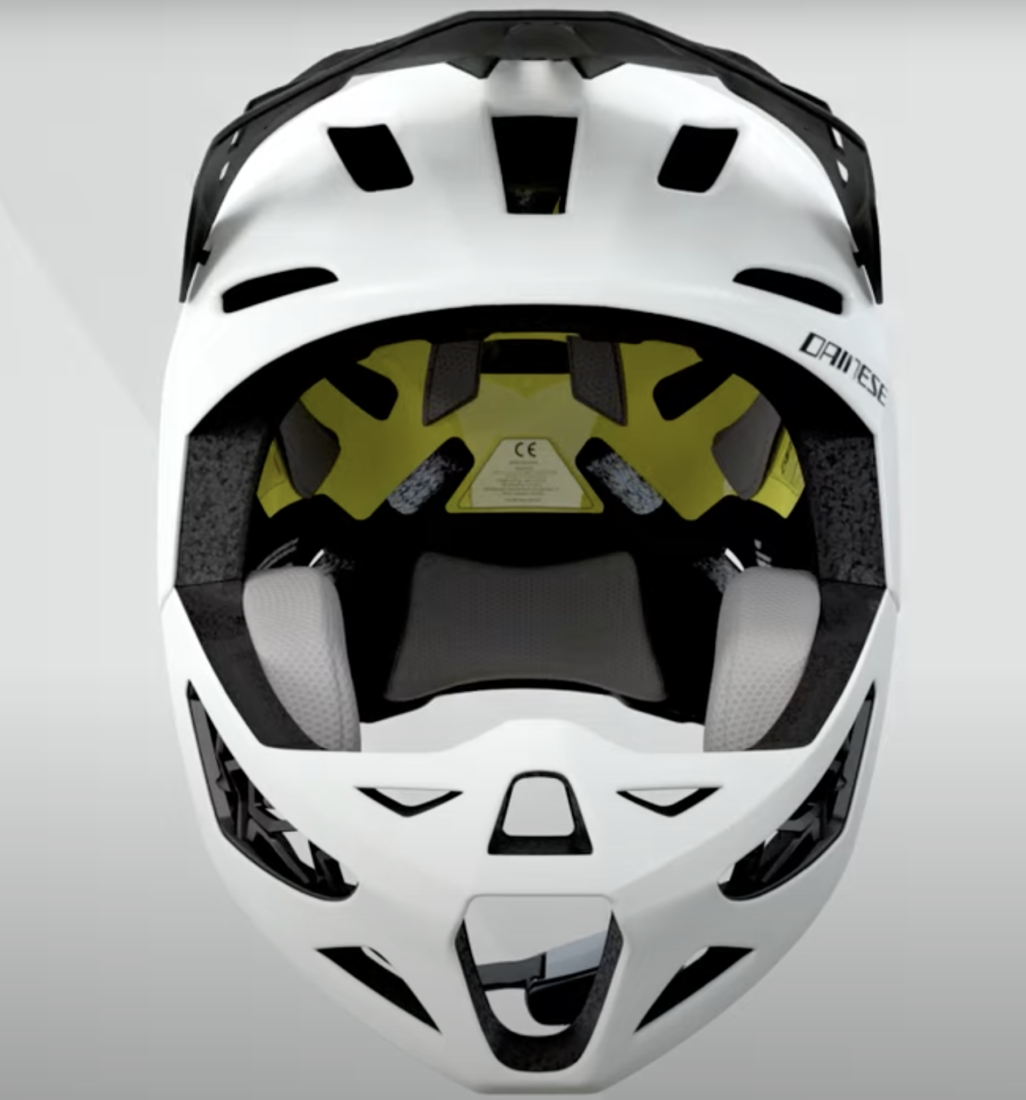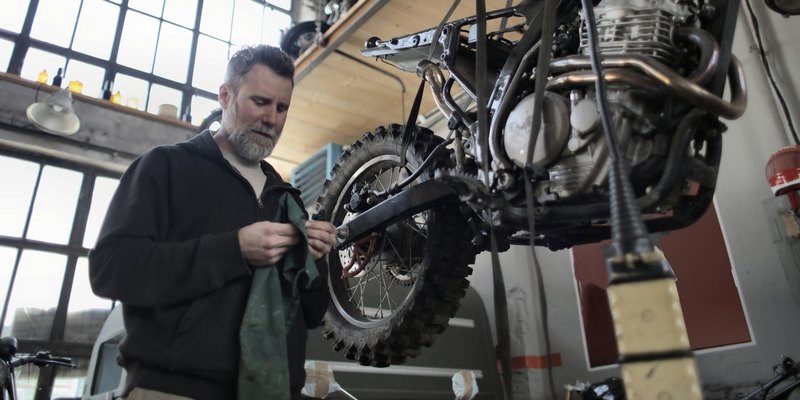Experience Safety and Comfort with Lightest Full Face Helmet

In the realm of motorcycle gear, whether one embarks on a short neighborhood cruise or embarks on an epic cross-country journey, the burden of helmets becomes evident. Over time, these protective headpieces exact their toll on the wearer’s shoulders and neck, sapping energy during the ride.
It’s no surprise that countless riders, including our narrator, seek out the lightest possible motorcycle helmets. Among the options examined, the following stand out as the lightest in their class.
Lightest Motorcycle Helmet Overall
Scorpion EXO-R1 Air Carbon Helmet
Weighing a mere 2.99 pounds, the Scorpion EXO-R1 Air stands as a paragon of comfort and safety. It couples a carbon shell with an EPS liner, offering substantial protection without the associated weight. This combination ensures both longevity and enhanced security.
Riders, regardless of their particular style, find it beneficial. Long journeys and tours benefit from reduced fatigue, while racers and sport riders appreciate the improved balance it provides. Its lightness doesn’t compromise safety, thanks to the carbon-fiber shell and multi-layer EPS that absorb impact energy. In the event of an emergency, the helmet can be removed by EMTs without disturbing the neck, mitigating potential harm.

However, it’s worth noting that the EXO-R1 can be somewhat noisy due to its lightweight construction. Scorpion attempts to mitigate this with an AirFit adjustment system for snug, wind-resistant cheek pads and a chin curtain to minimize airflow from below.
Pros:
- Multilayer EPS;
- Emergency-release cheek pads;
- AirFit inflation adjustment;
- Aero chin curtain;
- Removable antimicrobial interior.
Cons:
- Loud.
Shark S-Drak 2 Carbon Helmet
For those in search of an open-face helmet, the S-Drak 2 is a compelling choice, weighing in at just 2.89 pounds. Despite its lack of a full chin guard, it compensates with a removable face mask that enhances comfort and wind resistance during cooler rides. Additionally, the retractable sun visor and optional peak grant adaptability for varying weather conditions and riding scenarios.
However, prospective buyers should take heed of the sizing guide. The helmet offers only two shell sizes, potentially making it challenging to attain an optimal fit.
Pros:
- Comfortable open-face design;
- Removable face mask;
- Retractable sun visor;
- Snap-on peak.
Cons:
- Only two shell sizes;
- No chin protection.
HJC RPHA 11 Pro Carbon Helmet
Adherents of the HJC brand will be pleased to discover the RPHA 11 Pro, a lightweight marvel tipping the scales at a mere 3.06 pounds. Its carbon-fiber shell balances weight and durability, ensuring both comfort and safety. The helmet’s aerodynamic design minimizes drag, making highway speeds more enjoyable and less noisy.
Ventilation aficionados will appreciate the adjustable forehead and chin vents, coupled with rear exhaust vents, ensuring optimal airflow for summer commutes. The MultiCool interior wicks away sweat, aiding in temperature regulation. Beyond its performance, the RPHA 11 Pro offers a range of finishes, from sleek colors to eye-catching graphic designs to match individual tastes.
Pros:
- Tough protective shell;
- Extensive ventilation;
- Removable antibacterial MultiCool interior;
- Graphic finish options;
- Emergency-release cheek pads.
Cons:
- Awkward chin strap.
Sedici Strada II Carbon Helmet
The Sedici Strada II presents a lightweight yet robust option, weighing in at a mere 3.16 pounds. Its carbon shell rests upon a dual-density EPS liner, securing DOT certification.
Notably, this helmet delivers a lightweight carbon model at an economical price point. Trade-offs include noticeable lift at high speeds, albeit with surprising quietness, thanks to a removable chin skirt. Comfort features include adjustable padding and removable, washable cheek pads, promoting softness and longevity. Ventilation augments comfort in warm conditions while minimizing fogging.
Pros:
- Dual-density EPS liner;
- Great value;
- Removable chin skirt;
- Adjustable padding;
- Removable, washable cheek pads;
- Ventilation.
Cons:
- Lift at high speeds;
- Runs small.
AGV Sportmodular Carbon Solid Helmet
AGV, a renowned helmet brand, presents the Sportmodular, a lightweight contender at just 3.2 pounds, remarkable given its modular design.
Safety takes precedence with carbon fiber construction and a five-density EPS liner, available in four sizes for precise fitting. The shell design disperses impact shock away from the collarbone, maintaining aerodynamics and agility. Additional features include antibacterial cheek pads, ample ventilation, and a reversible crown pad for adapting to various weather conditions.
Pros:
- Modular design;
- Five-density EPS;
- Safe, aerodynamic shell design;
- Antibacterial cheek pads;
- Extensive ventilation;
- Reversible crown pad.
Cons:
- Premium pricing.
Carbon Fiber
Each helmet on this list boasts a carbon-fiber shell, the ultimate material for crafting lightweight yet highly protective headgear.
Safety
In the pursuit of lighter motorcycle helmets, one must never compromise on safety. It’s imperative that riders prioritize protective elements that guarantee their well-being on the road. A fundamental starting point in this endeavor is the utilization of a carbon-fiber shell. This material strikes a harmonious balance between strength and weight, ensuring that the helmet remains robust while minimizing any unnecessary bulk.
- Equally essential is the presence of an EPS liner designed to absorb the force of impacts. This liner acts as a vital cushion, safeguarding the rider’s head from potential harm. It’s a non-negotiable feature for anyone looking to prioritize safety;
- Beyond the helmet’s construction, certain key safety features should not be overlooked. An emergency release mechanism can prove invaluable in situations where swift removal is necessary, as it minimizes the risk of exacerbating injuries. A wide field of vision contributes to improved situational awareness, allowing riders to react promptly to changing road conditions.
Last but not least, a snug yet comfortable fit is vital. A helmet should stay securely in place without causing discomfort, ensuring that it can effectively protect the rider in the event of an accident.
Aerodynamics and Lift
One prevalent challenge with lightweight helmets is their tendency to exhibit excessive lift when faced with high speeds. This issue not only affects the rider’s comfort but can also compromise safety by altering the helmet’s positioning during a ride. To address this concern, it’s imperative to select a lightweight helmet that incorporates an aerodynamic design.
- An aerodynamic helmet is crafted with careful attention to airflow dynamics. Its shape is engineered to reduce drag and lift, allowing it to seamlessly slice through the wind;
- This not only enhances the rider’s overall comfort by minimizing the force exerted on the helmet but also maintains the helmet’s optimal positioning. In high-speed scenarios, an aerodynamic helmet remains steadfast, ensuring that it shields the rider’s head effectively.
When seeking a lightweight helmet, prioritize those with an aerodynamic design. By doing so, you not only maximize your riding experience by reducing discomfort caused by lift, but you also bolster your safety, ensuring that your helmet remains securely in place during every exhilarating journey on the open road.
Ventilation
Ventilation serves as a critical aspect of helmet design, and its importance cannot be overstated, regardless of the helmet type you choose. Proper airflow management not only enhances comfort but also plays a pivotal role in ensuring your safety on the road.
Helmets equipped with adjustable ventilation mechanisms provide riders with the means to control the airflow. This adjustability is especially beneficial because it enables riders to tailor their helmets to the current riding conditions. When it’s hot and sweltering, opening up the vents ensures that you stay cool and sweat-free. In contrast, in colder weather, you can partially or completely close the vents to retain warmth and comfort.
Final Thoughts
Advancements in technology have revolutionized the world of motorcycle helmets, continually pushing the boundaries to create headgear that is both lighter and safer. This ongoing innovation has paved the way for helmets like the Scorpion EXO-R1 Air Carbon Helmet, which stands as a shining example of the perfect equilibrium between lightweight design and uncompromising security. Riders now have the privilege of experiencing a helmet that doesn’t weigh them down while ensuring their safety remains paramount.
- In addition to the EXO-R1, the Shark S-Drak 2 Carbon Helmet shines in the realm of open-face options, offering riders a compelling choice for those who favor this style. It exemplifies how technology has enabled the creation of helmets that cater to specific preferences, in this case, providing comfort and wind resistance without sacrificing protection;
- In light of these advancements, riders should be acutely aware of key considerations when selecting their ideal helmet. Carbon-fiber shells have emerged as the gold standard, combining strength and lightness. Safety features, such as EPS liners and emergency-release mechanisms, should not be overlooked. Equally crucial are factors like aerodynamics and ventilation, as they contribute to both comfort and safety on the road.
In summary, the future of motorcycle helmets is bright, thanks to the relentless progress of technology. Riders can now revel in the knowledge that they don’t have to compromise between lightness and safety, as exemplified by the Scorpion EXO-R1 Air Carbon Helmet and the Shark S-Drak 2 Carbon Helmet. Prioritizing these innovations alongside carbon-fiber shells, safety features, and thoughtful design elements will ensure riders find the perfect helmet to suit their needs and preferences.
